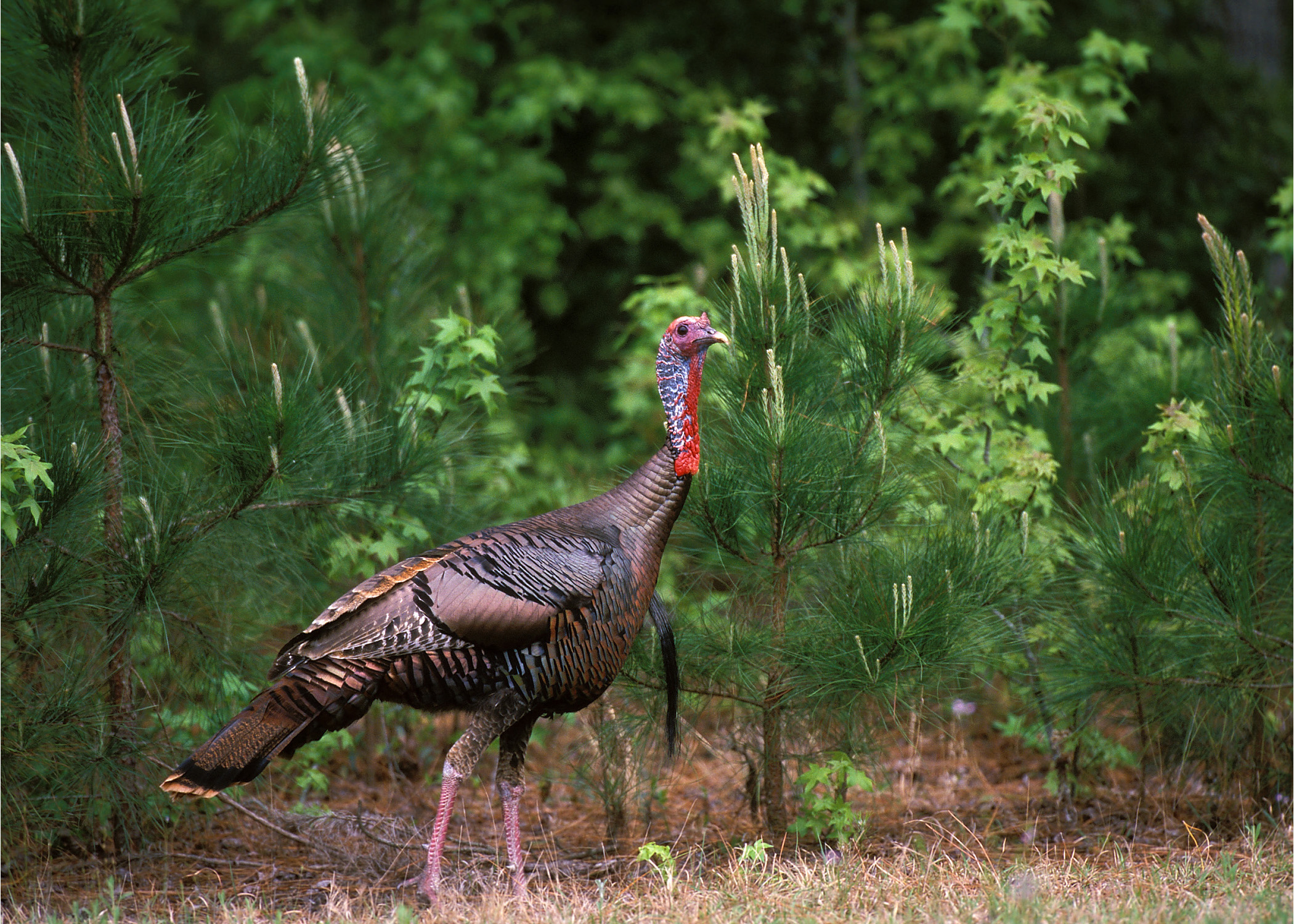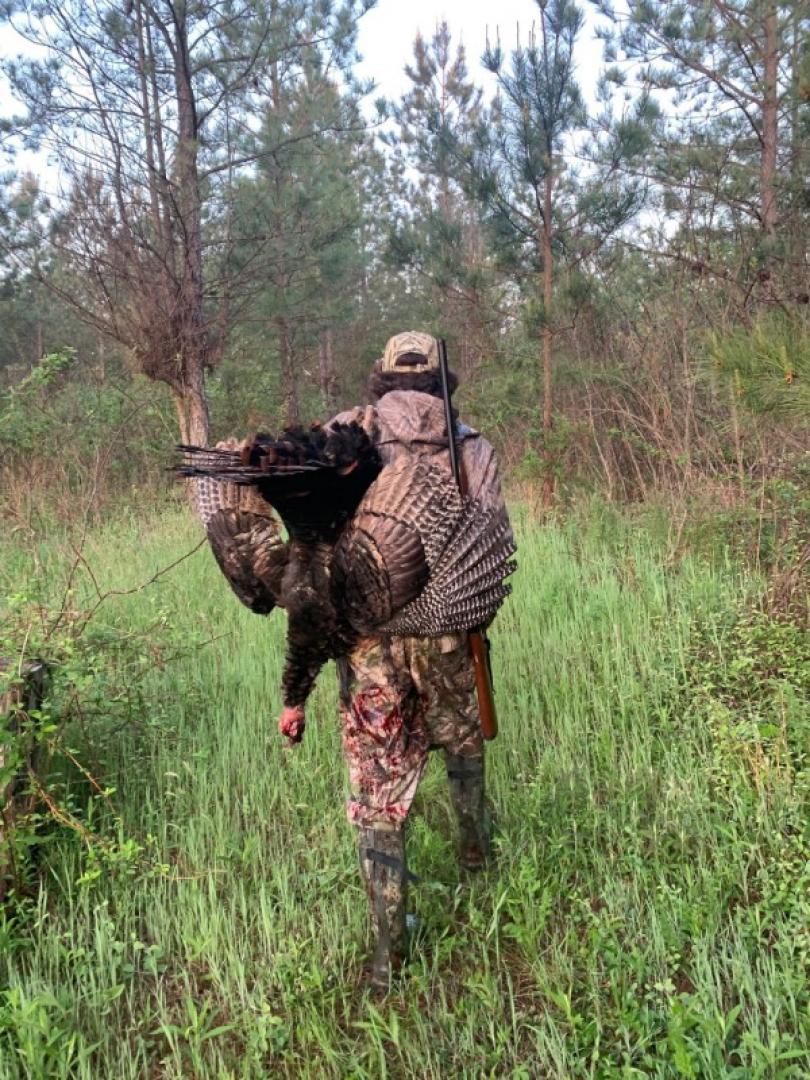Tactics
Plan Your Dove Fields Now for Hunting Season Success
July 2, 2025 •John N. Felsher
Turkey hunting is a time-honored tradition that blends the thrill of the chase with the satisfaction of a successful harvest. For those new to the world of turkey hunting, it’s essential to understand the basics before venturing into the woods. In this Hunting Wild Turkey 101 guide, we’ll cover everything from the types of turkeys you might encounter to the gear you’ll need, hunting techniques, and even tips on preparing and cooking your hard-earned bounty. After reading, you’ll be ready for expert turkey hunting in no time.

To the casual observer, wild turkeys may all look the same. But they’re not. There are actually four main subspecies of wild turkey spread across the continental United States and Hawaii, each with their own appearance and characteristics.
The most widely distributed subspecies are Easterns, whose range stretches across the entire Eastern half of the United States into parts of the central plains. Rio Grandes are the second most populous subspecies with their core range running through most of central Texas up through Oklahoma and into Kansas and Nebraska. Pockets of Rios can also be found in California, Oregon and eastern Washington, as well as Hawaii. Merriam’s predominate in large swaths of South Dakota, Nebraska, Wyoming, Montana, Idaho and south through the Rockies all the way into New Mexico and Arizona.
Osceolas are only found in the southern half of Florida and are found in the most limited range of any subspecies short of a tiny pocket of re-established Gould’s wild turkeys in the very southern part of Arizona around Fort Huachuca. Osceola’s offer the first opportunity to hunt wild turkeys in North America each spring with the first seasons in southern Florida opening usually around the first week of March. To hunt Gould’s, most hunters travel to Sonora or Chihuahua in Mexico where the birds are more populous. Because the hunting of Gould’s in Arizona is still so limited, that is why the taking of an Eastern, Osceola, Rio Grande and Merriam’s in the United States is considered a wild turkey Grand Slam.
While each of these subspecies share many similarities, they all have slight differences in appearance, such as the broken bars on the Osceola’s wings or bright white tipped tail fan feathers found on the Merriam’s. But the real challenge is understanding the type of terrain each subspecies calls home and how they use that terrain, and perhaps even more importantly, how you should use their terrain as well to hunt them and call them in.
Like any game, wild turkeys have specific hunting seasons set by wildlife management agencies to ensure sustainable populations. These seasons vary by state, so it’s imperative to check local regulations before heading out. Typically, spring is the most popular season for turkey hunting, coinciding with the birds’ mating season when gobblers are most vocal and responsive to calls. Fall seasons may also be available, focusing on different hunting strategies.
While you can find turkey hunting opportunities across most of North America, we have a few specific recommendations to help get you started:
 Selecting the Right Firearm
Selecting the Right FirearmWhen it comes to choosing a firearm for turkey hunting, shotguns are the weapon of choice. The most common gauge used is 12, with 20-gauge also being a popular option for those who prefer a lighter firearm. It’s important to use ammunition specifically designed for turkey hunting, such as turkey loads, which are designed to deliver dense patterns at longer distances. Many hunters opt for shotguns equipped with a choke tube to improve accuracy and pattern density.
You can also use muzzleloaders or bows if that’s more to your liking.
Learn how to choose the best gun sight for turkey hunting here.
Turkey calls are indispensable tools for luring in these wily birds. There are various types of calls, including box calls, slate calls, mouth calls, and diaphragm calls. Each has its advantages, and it’s often a matter of personal preference. Learning to mimic the distinctive sounds of turkeys, such as yelps, clucks, purrs, and gobbles, can significantly increase your chances of success. Practice your calling techniques before heading into the field to ensure a natural and convincing performance.
Wild turkeys have keen eyesight, making effective camouflage and concealment vital for a successful hunt. Wear clothing that matches the natural colors of the environment you’ll be hunting in, and consider a full camo setup, including face masks and gloves. Additionally, using a ground blind or natural cover can help break up your silhouette and keep you hidden from the sharp eyes of a turkey.
Aside from a shotgun and turkey calls, there are several other pieces of gear that every turkey hunter should have:
When hunting wild turkey, patience and persistence are key. Consider these tips to improve your chances:
Once you’ve successfully harvested a turkey, the next step is field dressing and packing. Follow these steps:

Bringing a wild turkey from the field to the table is a delicious treat; the meat is lean and flavorful, making it a versatile ingredient for various dishes. Here are a few ways to prepare your wild turkey:
Going on a wild turkey hunt is not just a pursuit of a beautiful animal; it’s an immersion into nature, an exercise in patience, and a celebration of hunting. By understanding the basics of turkey hunting, from selecting the right gear to mastering calling techniques, you can enhance your chances of a successful and fulfilling experience in the great outdoors. Remember to prioritize safety, respect the regulations, and savor the process from field to table as you join the ranks of passionate turkey hunters across the nation.